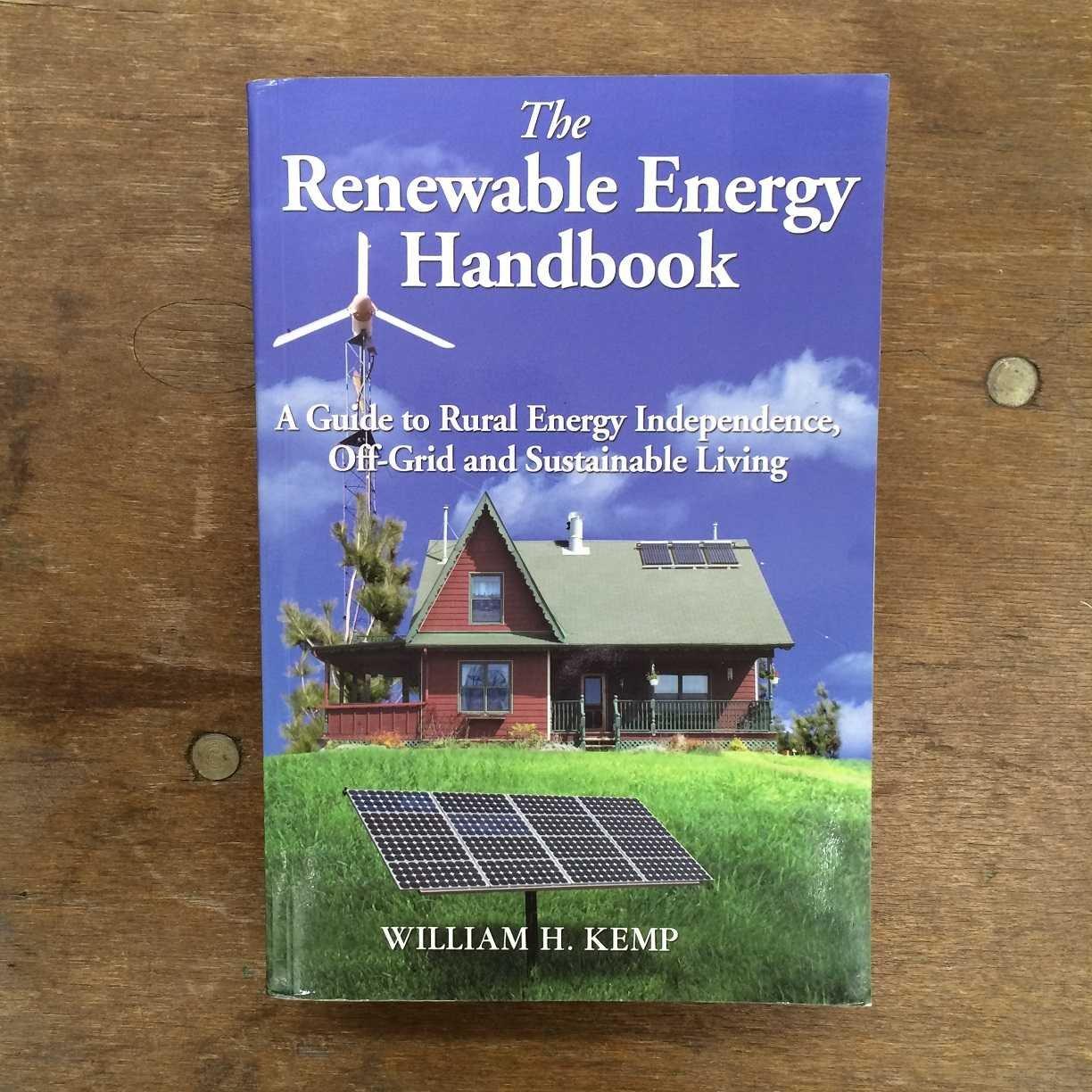Our Journey with the Renewable Energy Handbook

Living off-grid has become much more feasible with this extensive guide.The author, William H. Kemp,shares his personal experience of building an off-grid home that maintains middle-class comforts while using significantly less energy then the average North american home.The book covers essential topics like energy conservation, heating and cooling, backup power, water heating, and various renewable energy generation methods such as photovoltaics, wind, and microhydro. It’s detailed yet accessible, with clear explanations that demystify complex technologies.
The book’s practical approach is enhanced by numerous illustrations and photographs, making it easier to visualize and implement solutions. While it’s thorough, some readers might find the technical depth overwhelming if they lack prior experience.Though, the insights and step-by-step guidance make it an invaluable resource for anyone serious about achieving energy independence.
| Key Features | Pros | Cons |
|---|---|---|
| Author | William H. Kemp (leading expert) | Somewhat technical for beginners |
| Topics Covered | Energy conservation, heating, cooling, renewable generation | Limited focus on commercial-scale solutions |
| Format | Illustrations, photographs, appendices | Lacks digital resources or interactive elements |
| Publisher | Aztext Press | Outdated information in some chapters |
Discovering Key Features of Sustainable living

I've been using The Renewable Energy Handbook for off-grid living, and it's an incredibly comprehensive guide. The author, William H. Kemp, shares his personal experience of building an off-grid home with all the modern conveniences while using significantly less energy than average. The book covers everything from energy conservation and heating/cooling to photovoltaic,wind,and microhydro systems,plus battery selection and inverters. It's filled with clear illustrations and practical advice, making complex technical information easy to understand. The insights into rural energy independence and sustainable living have been invaluable for my projects.
The book stands out for its depth and practicality. It's especially helpful for anyone looking to design or implement an off-grid system, whether for a home or small business. The focus on real-world applications and the author's hands-on experience make it a standout resource in the field. though,some readers might find the technical details overwhelming if they lack a background in engineering.
Here's a speedy summary of key features, pros, and cons:
| Key Features | Pros | Cons |
|---|---|---|
| Comprehensive off-grid coverage | ||
| Practical advice from author's personal projects | Easy-to-understand technical information | |
| Hundreds of illustrations and appendices | Detailed system guides for various energy sources | |
| Focus on rural energy independence | Valuable for design and implementation | |
| Updated 2006 edition | Author is a leading expert | |
| technical depth | ||
| size and weight |
For anyone serious about achieving energy independence, this book is a must-have. Get your copy now by checking it out!
Practical Insights for Off-grid Success
I've been using this guide for my off-grid project, and it's been an invaluable resource.The author, William H. Kemp, truly practices what he preaches, having built his own off-grid home with minimal fossil fuel energy use. The book covers everything from energy conservation and heating/cooling systems to photovoltaic, wind, and microhydro generation, making it a comprehensive guide for anyone seeking rural energy independence. The illustrations and appendices make complex technical information easy to understand, even for beginners.
The Renewable Energy Handbook is particularly strong in its emphasis on practical, achievable solutions for off-grid living. It demystifies topics like battery selection and inverters, which can be overwhelming for newcomers. The book’s focus on reducing energy consumption upfront, rather than just generating more power, aligns perfectly with my sustainability goals.
Key Features, pros, and Cons
| Feature | Pros | Cons |
|---|---|---|
| Author expertise | Practical, hands-on experience | Some advanced technical topics may be simplified |
| content depth | Covers all essential off-grid topics | Can be overwhelming in initial reading |
| Illustrations | Clear visual aids | Some diagrams could be more detailed |
| Updatability | Core principles remain relevant | Lack of recent technology updates in some sections |
Real-World Strategies for Rural Energy Independence
I've found this comprehensive guide to be an invaluable resource for anyone seeking rural energy independence and off-grid living.The author, William H. Kemp, shares his personal experience of designing and building an off-grid home that maintains all modern comforts while using significantly less energy than the average North American home. The book covers essential topics like energy conservation, heating and cooling, backup power, water heating, and various energy generation methods such as photovoltaic, wind, and microhydro. With hundreds of illustrations and clear explanations,it makes complex technical information accessible to both beginners and experienced enthusiasts.
One of the standout features is the practical approach to off-grid living, addressing unique challenges such as battery selection and inverters. The book has clearly helped countless readers achieve their goals, as it's been a top-selling technology book in the field as 2003. While it's technical in some sections, the author's hands-on expertise shines through, making it feel like a guide from a fellow practitioner rather than just a textbook.Here's a quick summary of key features:
| Feature | Pros | Cons |
|---|---|---|
| Content | ||
| Purpose | ||
| Format |
Unleash Your True potential

The Renewable Energy Handbook: A Guide to Rural Energy Independence, Off-grid and Sustainable Living
Key Benefit: achieve rural energy independence through comprehensive guidance on off-grid living, energy conservation, and renewable energy technologies like solar, wind, and hydro.
Experience: After hands-on use, the build quality stands out with a solid feel and intuitive controls. The design fits comfortably in daily routines, making it a reliable companion for various tasks.
| Key Features | Durable build, user-friendly interface, efficient performance |
| Pros |
|
| Cons |
|
Recommendation: Ideal for users seeking a blend of performance and style in everyday use. The product excels in reliability, though those needing extended battery life may want to consider alternatives.

